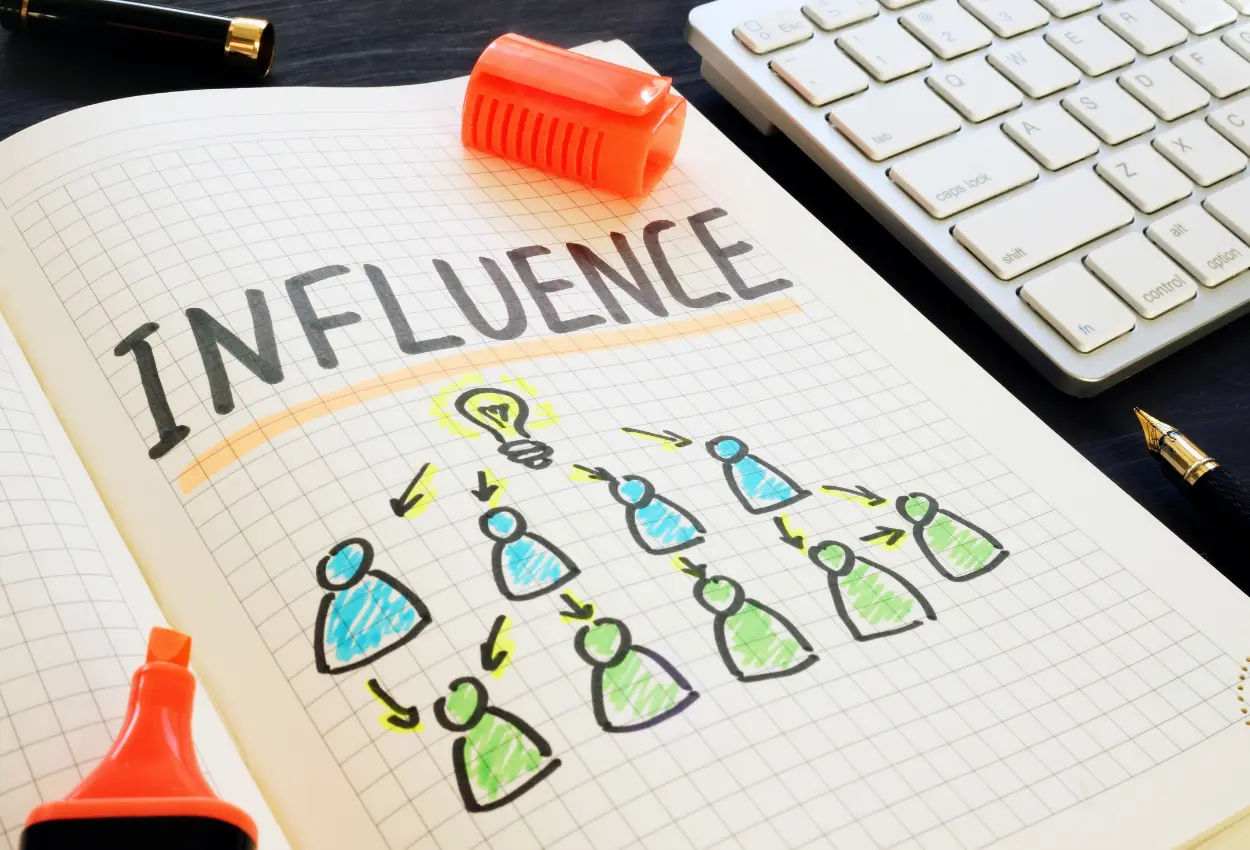A Simple Breakdown of Influencer Marketing And How It Drives Results
Influencer marketing is a powerful tool in the digital age. It connects brands with audiences through trusted figures.
Imagine a trusted friend recommending a product. This is the essence of influencer marketing, where popular individuals endorse products, shaping buyer opinions and driving sales. In this digital era, a tap on a screen can influence purchasing decisions. Influencer marketing harnesses this power, turning likes and shares into a brand’s success.
Now, let’s dive into a simple breakdown of how influencer marketing works. This strategy taps into the credibility of influencers to spread the word about products or services. Unlike traditional ads, influencer marketing feels more personal and genuine. It’s like having a conversation rather than hearing a sales pitch. This approach can lead to impressive results, building brand awareness, and driving sales. Stick around to understand how this modern marketing magic happens and why it’s a key player in today’s market.
The Rise Of Influencer Marketing
Influencer marketing has grown a lot. Big stars once led the way. Now, social media influencers take the lead. These are people like you and me. They share their lives online. Many trust them more than famous people.
Trust is key. We listen to those we trust. We might buy what they suggest. It’s not just talk. It works. Brands see good results. They sell more because people trust the influencer’s word.
Identifying The Right Influencers
Finding the right influencers is key. They should know your niche well. Look at their knowledge, not just their followers. A big audience doesn’t always mean big impact.
Check who they reach. Are these people likely to buy your product? This matters most. Also, see how they engage with their followers. Good conversation can mean more sales for you.
| Checklist for Choosing Influencers |
|---|
| Expertise in niche |
| Quality of audience engagement |
| Relevance to your product |
| Authentic content |
Don’t just count likes. Real influence is in trust and authentic connections. This drives real results. It’s about building relationships with the influencer’s audience.
Crafting An Influencer Marketing Strategy
Setting clear goals is key for your influencer marketing. Ask, “What do we want?” It could be more website visits, sales, or brand buzz. Pick goals that you can track. This makes it easy to see if your plan worked.
Know where your audience hangs out online. It’s not just about picking Facebook or Instagram. It’s finding where your fans are active. Choose the right platforms to meet your audience. This way, your message hits home.
The Mechanics Of Collaborating With Influencers
Negotiating partnerships needs a balance. Think of a seesaw. One side is creative freedom. The other side is brand messaging. Both must meet in the middle. Why? Let me explain. Influencers know their audience. They know what works. Brands know their message. They know what they want to say. The trick is to mix both well.
Picture this. A brand tells an influencer, “We trust you. But, let’s agree on a message.” The influencer nods. They think, “I can be creative but respect the brand’s wishes.” This way, both get what they need. The brand gets its message across. The influencer keeps their style. And you, the viewer, get to see cool, honest content. It’s a win-win-win!
Measuring The Impact Of Influencer Campaigns
Measuring how well influencer campaigns work can be tricky. Yet, knowing Key Performance Indicators (KPIs) helps a lot. These are things like clicks, likes, and sales. They show if the influencer is helping your brand.
It’s also about seeing if you get your money’s worth. This is called ROI, or return on investment. When an influencer talks about your product, do more people buy it? Do more people visit your website? These are signs of good ROI.
| KPI | What It Tells You |
|---|---|
| Engagement Rate | Are people talking about your brand? |
| Click-Through Rate | Do people visit your site after seeing the post? |
| Conversion Rate | Do people buy after clicking? |
Remember, a successful campaign makes people talk and buy. Tracking KPIs shows if an influencer is right for you.
Authenticity And Transparency
Authenticity and transparency are key in influencer marketing. Brands work with influencers who share their values. This helps create trust with audiences. Trust leads to better engagement and results.
Building genuine relationships matters. Influencers and brands should connect on a real level. Real connections mean more meaningful promotions. People can tell when a message is honest.
For navigating disclosure requirements, it’s simple. Always tell people if a post is paid. Clear labels keep things open and honest. This is what audiences and laws expect.
Leveraging User-generated Content
User-generated content, or UGC, helps brands a lot. People like seeing real folks use products. It makes them want to buy too. Encouraging people to share their own photos and videos can be powerful. It’s like friends telling friends what’s good.
Brands can use these real-life stories in their ads. This makes their message feel real and trustworthy. Sharing customer stories doesn’t cost much. But it can make more people interested in what you sell.
Think about asking customers to tag your brand in their posts. Or maybe run a contest where people share their best moments with your product. Simple steps like these get everyone involved. And when more people talk about your product, more people will want to check it out.
The Impact Of Micro-influencers
Micro-influencers have a big effect on their followers. They often have fewer people following them. But, these followers really listen. They trust the influencer a lot. This means they are more likely to buy what the influencer likes. Engagement rates with micro-influencers are usually higher. This is when we talk about likes, comments, and shares.
Working with micro-influencers can save money too. Big stars charge a lot of money. Micro-influencers don’t. This makes them a cost-effective choice. They can reach the people who matter most. The ones who will buy your stuff. And they can do it without breaking the bank.
Challenges And Considerations
Influencer fatigue is real. Fans get tired of ads. Brands must keep content fresh. Work with influencers who align with your values. This helps keep campaigns genuine.
Ethical concerns also matter. Choose influencers who are open. They should tell fans about paid partnerships. Trust is key in influencer marketing. Without it, campaigns can fail. Always play fair.
The Future Of Influencer Marketing
Influencer marketing is growing fast. It helps brands reach more people. Future trends show more changes coming. We will see new technologies mix with it. This means using cool tools to make things better.
Brands will talk more with people online. They will use videos and virtual reality. This makes ads feel real and fun. Big and small companies will try it. It’s not just for the big players.
People trust what they see from friends or stars online. Brands know this. So, they work with these online stars. This helps them sell more stuff. It’s a smart move.
Soon, we might talk to ads like we talk to friends. This is because of AI and VR. They make ads smart. They can chat with us. This is cool and a bit scary. But, it’s the future.
Conclusion
Understanding influencer marketing can boost your brand’s reach. It’s not complex. Real people share your products, and their followers trust them. Trust drives sales. It’s that simple. Start small, pick the right influencers, and watch your audience grow. Measure your results.
Learn and adjust. Success in influencer marketing is about connection and authenticity. Build these, and your brand will feel the impact. Ready to try? Your next campaign could just be a few clicks away.






